A peek into Madrid's most exclusive private members' clubs

With the newest player on the scene aiming to challenge elitism and exclusivity - and with Soho House Madrid on its way - writer and cultural consultant Agnish Ray took a look at some of the capital’s most iconic private members’ clubs, both old and new…
Standing at the doorway of Casino de Madrid - just next to Sevilla metro station on Calle de Alcalá - you catch a glimpse of its ornate, resplendent, undulating baroque marble staircase, adorned with sculptures of fauns, cherubs and other classical figures. Getting past the doorman to actually climb up these stairs, however, is not so easy.
The waiting list for membership at this private club is a long one and you’ll need two existing members to recommend you personally - not to mention fork over a joining fee of over €6,000 - before you can be accepted into the fold and get access to the facilities.
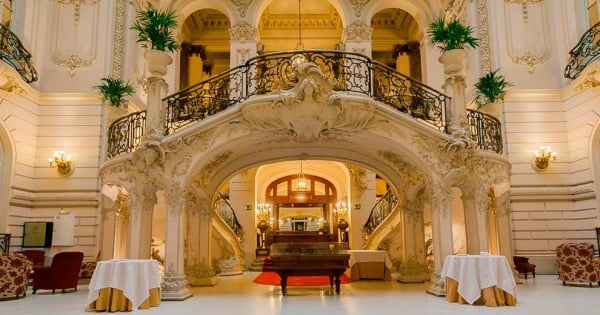
Photo: NH Collection
Founded in 1836, Casino de Madrid is among the city’s oldest and most prestigious private members’ societies. Modelled on the “gentlemen’s clubs” of Victorian and Edwardian England, institutions like this were set up as meeting places for Spain’s high society - government officials, businessmen, aristocrats and intellectuals - to smoke, drink, play cards and discuss matters of national interest.
Today, Madrid is home to several such clubs, both old and new, offering their members a combination of exclusivity, luxury, convenience and community. Many of them maintain the formal, elitist air of the original 19th century models: dress codes that prohibit casual footwear and enforce ties and jackets for men; long, inaccessible waiting lists for membership; and a sense of secrecy that battles off any press attention for the sake of maintaining their illusion of mystery.
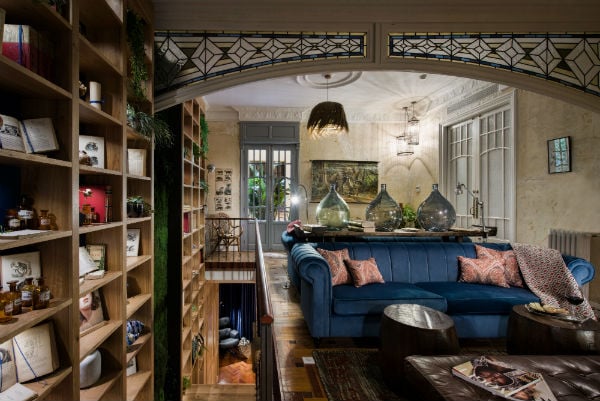
Photo: Antonio Pistillo / AROUND
Others, however, are looking to break the conventional mould. The newest kid on the block, for example - AROUND Madrid - claims to be Spain’s first ‘accessible’ organisation of its kind. It is looking to redefine the elitism usually associated with private members clubs, associating itself instead with an emerging, ambitious generation of millennials.
AROUND’s ethos of accessibility is reflected not only in its pricing (€48 per month), designed for a younger demographic, but also in its selection process. The senior team vets applicants with personality tests, as well as via their social media channels, in order to identify members who are creative, cosmopolitan and socially conscious - “everyday heroes”, as AROUND’s director Samantha Noia puts it, “who are looking for something outside of the norm.”
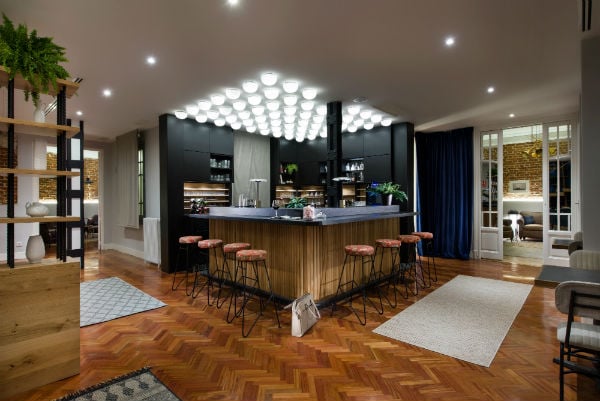
Photo: Antonio Pistillo / AROUND
A high of proportion of AROUND’s members so far are women, Noia tells me proudly. What is perhaps even more remarkably is the fact that Noia is the only female director of a private members club in Spain.
It seems an important step for the industry when comparing with an organisation like the 150-year-old La Real Gran Peña , whose gender policy raises eyebrows in a rather different way.
Based in an emblematic nine-storey building, right on the Gran Via, this club sits at one of Madrid’s most conspicuous locations - and yet what goes on behind closed doors remains a mystery to many, owing to a strict closed door policy. Furthermore, it is understood that - even today - women are not allowed to become full society members.
It’s a different story over at Club Alma, where 70 percent of members are female. Located in Príncipe de Vergara, the club was set up in 2016 to create an environment that actively welcomed and empowered women, offering them the same exclusivity and social and professional privilege that had historically been associated with male society, while at the same time remaining open to male applicants.
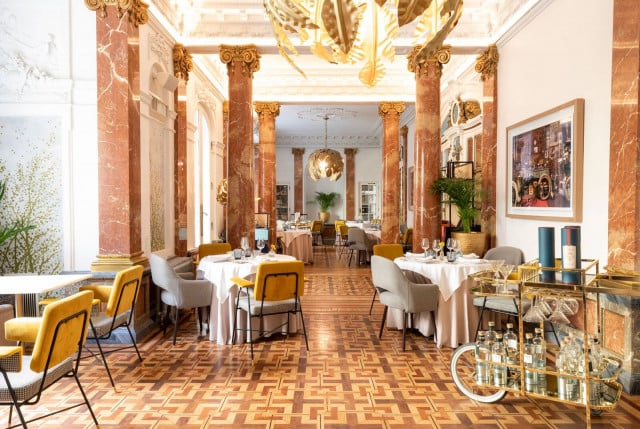 Photo: Club Alma
Photo: Club Alma
The mansion, designed in Spanish Renaissance style, featuring high ceilings, stained glass and floor mosaics, was once home to prominent philanthropist Conchita de Rábago Fernández and her husband, the renowned doctor, Carlos Jiménez Díaz. Today, the club wishes to uphold the legacy of the building and its connections to important female figures.
It’s clear that while all members’ clubs are founded upon similar principles, each must have its own unique identity, offer and audience in order to succeed.
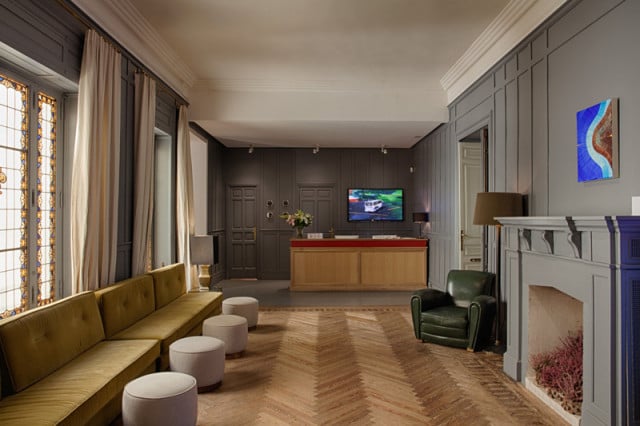
Photo: Miguel Pereira / Club Matador
Club Matador, for example, which opened in 2014, has a distinctive tendency towards culture and creativity. The owner is the publisher of Matador magazine. an annual art and culture publication, and the club is conceived in a similarly arty spirit. Matador presents two art exhibitions per year, owns a film collection of over 1,000 works and also has an on-site library.
-1.jpg)
Meanwhile, Club 567 describes itself as a “club for influential people” and comes with a strong business focus, bringing together business people and entrepreneurs to develop professional networks, generate commercial ideas and contribute to the city’s economic productivity. Members are encouraged to use the space for meetings, events, presentations, training sessions and networking, while the club’s committee also offers them free business consultancy on topics like marketing, branding, finance, energy, IT and law.
Madrid’s trend for private members’ clubs won’t be slowing down any time soon - Soho House is rumoured to be bringing its second Spanish venture to Madrid soon, following the opening of its Barcelona branch back in 2016.
Ultimately, the variety between the different clubs in the capital illustrate the diversity of opinion on what should be considered to be the social elite. Today, the business leaders of today (and tomorrow) wear Converse and skinny jeans rather than suits and fancy ties - it’s therefore this market that new players on the scene are looking to capture.
In many ways, the newer clubs opening up are just replicating the patterns of their predecessors while keeping up with the demographic shift - while people were once judged on their wealth, family connections and professional status, they are now judged for their selfies, followers and social influence. On the one hand, they reject the 19th century notions of social elitism that their older counterparts embody - and yet the lengthy shelf lives of such still-standing institutions ultimately set a high precedent towards which to aspire.
For more from Agnish Ray visit his website or follow him on Twitter
Comments
See Also
Standing at the doorway of Casino de Madrid - just next to Sevilla metro station on Calle de Alcalá - you catch a glimpse of its ornate, resplendent, undulating baroque marble staircase, adorned with sculptures of fauns, cherubs and other classical figures. Getting past the doorman to actually climb up these stairs, however, is not so easy.
The waiting list for membership at this private club is a long one and you’ll need two existing members to recommend you personally - not to mention fork over a joining fee of over €6,000 - before you can be accepted into the fold and get access to the facilities.

Photo: NH Collection
Founded in 1836, Casino de Madrid is among the city’s oldest and most prestigious private members’ societies. Modelled on the “gentlemen’s clubs” of Victorian and Edwardian England, institutions like this were set up as meeting places for Spain’s high society - government officials, businessmen, aristocrats and intellectuals - to smoke, drink, play cards and discuss matters of national interest.
Today, Madrid is home to several such clubs, both old and new, offering their members a combination of exclusivity, luxury, convenience and community. Many of them maintain the formal, elitist air of the original 19th century models: dress codes that prohibit casual footwear and enforce ties and jackets for men; long, inaccessible waiting lists for membership; and a sense of secrecy that battles off any press attention for the sake of maintaining their illusion of mystery.

Photo: Antonio Pistillo / AROUND
Others, however, are looking to break the conventional mould. The newest kid on the block, for example - AROUND Madrid - claims to be Spain’s first ‘accessible’ organisation of its kind. It is looking to redefine the elitism usually associated with private members clubs, associating itself instead with an emerging, ambitious generation of millennials.
AROUND’s ethos of accessibility is reflected not only in its pricing (€48 per month), designed for a younger demographic, but also in its selection process. The senior team vets applicants with personality tests, as well as via their social media channels, in order to identify members who are creative, cosmopolitan and socially conscious - “everyday heroes”, as AROUND’s director Samantha Noia puts it, “who are looking for something outside of the norm.”

Photo: Antonio Pistillo / AROUND
A high of proportion of AROUND’s members so far are women, Noia tells me proudly. What is perhaps even more remarkably is the fact that Noia is the only female director of a private members club in Spain.
It seems an important step for the industry when comparing with an organisation like the 150-year-old La Real Gran Peña , whose gender policy raises eyebrows in a rather different way.
Based in an emblematic nine-storey building, right on the Gran Via, this club sits at one of Madrid’s most conspicuous locations - and yet what goes on behind closed doors remains a mystery to many, owing to a strict closed door policy. Furthermore, it is understood that - even today - women are not allowed to become full society members.
It’s a different story over at Club Alma, where 70 percent of members are female. Located in Príncipe de Vergara, the club was set up in 2016 to create an environment that actively welcomed and empowered women, offering them the same exclusivity and social and professional privilege that had historically been associated with male society, while at the same time remaining open to male applicants.
 Photo: Club Alma
Photo: Club Alma
The mansion, designed in Spanish Renaissance style, featuring high ceilings, stained glass and floor mosaics, was once home to prominent philanthropist Conchita de Rábago Fernández and her husband, the renowned doctor, Carlos Jiménez Díaz. Today, the club wishes to uphold the legacy of the building and its connections to important female figures.
It’s clear that while all members’ clubs are founded upon similar principles, each must have its own unique identity, offer and audience in order to succeed.

Photo: Miguel Pereira / Club Matador
Club Matador, for example, which opened in 2014, has a distinctive tendency towards culture and creativity. The owner is the publisher of Matador magazine. an annual art and culture publication, and the club is conceived in a similarly arty spirit. Matador presents two art exhibitions per year, owns a film collection of over 1,000 works and also has an on-site library.
-1.jpg)
Meanwhile, Club 567 describes itself as a “club for influential people” and comes with a strong business focus, bringing together business people and entrepreneurs to develop professional networks, generate commercial ideas and contribute to the city’s economic productivity. Members are encouraged to use the space for meetings, events, presentations, training sessions and networking, while the club’s committee also offers them free business consultancy on topics like marketing, branding, finance, energy, IT and law.
Madrid’s trend for private members’ clubs won’t be slowing down any time soon - Soho House is rumoured to be bringing its second Spanish venture to Madrid soon, following the opening of its Barcelona branch back in 2016.
Ultimately, the variety between the different clubs in the capital illustrate the diversity of opinion on what should be considered to be the social elite. Today, the business leaders of today (and tomorrow) wear Converse and skinny jeans rather than suits and fancy ties - it’s therefore this market that new players on the scene are looking to capture.
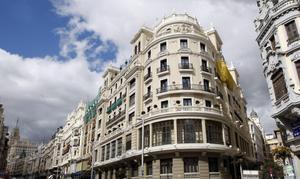
Join the conversation in our comments section below. Share your own views and experience and if you have a question or suggestion for our journalists then email us at [email protected].
Please keep comments civil, constructive and on topic – and make sure to read our terms of use before getting involved.
Please log in here to leave a comment.